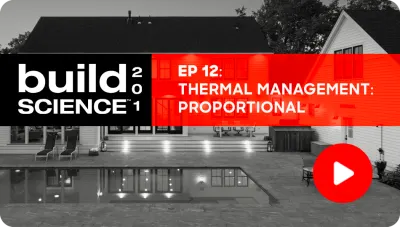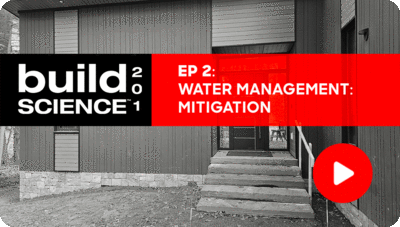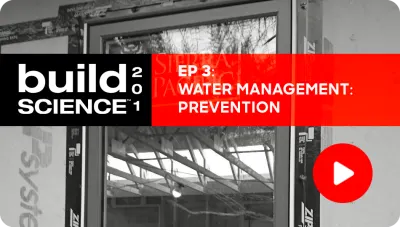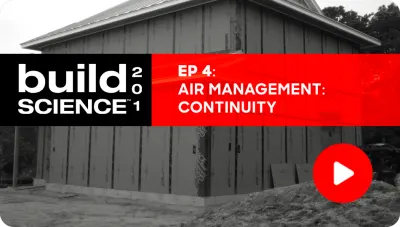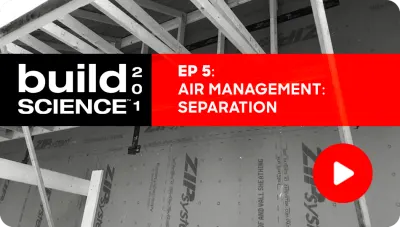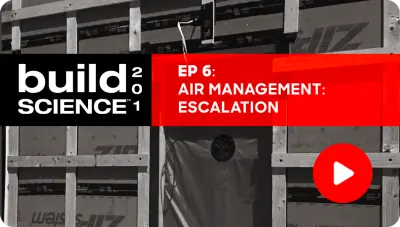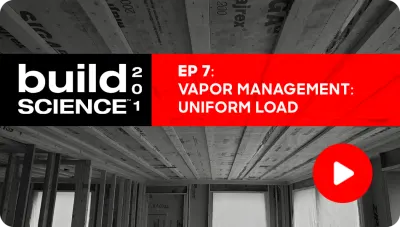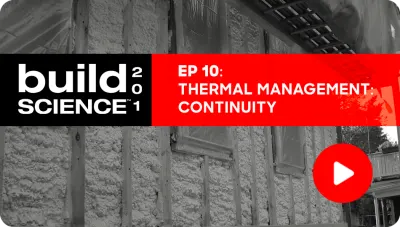Build Science™ 201
Ep. 1 - Water Management: Protection
Welcome back to Build Science™! Matt and Steve kick-off the series discussing water management and protection; remember, water is the number 1 killer of buildings. They emphasize how different design elements, climates, and locations affect risk levels.Matt compares protection elements to wearing a raincoat and using an umbrella; different design elements provide varying levels of protection. Matt and Steve share a few examples, such as houses in coastal areas and modern architectural designs, to illustrate how overhangs, projections, and other protective features can reduce the risk of water damage. They stress the importance of risk assessment, considering not only the overall structure but also individual components like windows and walls.Ultimately, Matt and Steve emphasize the need to prioritize water protection, explaining that less risky designs provide more forgiveness, while riskier ones demand higher costs and precision.Utilize building science to avoid common mistakes through careful planning and protection strategies.
Episodes
Ep. 6 - Air Management: Escalation
Episode 6
Matt and Steve emphasize effective air sealing to prevent moisture issues, highlighting techniques like fluid-applied sealants, meticulous penetrations, and blower door tests. They advocate for continuous improvement and training for airtight, efficient homes.
Ep. 11 - Thermal Management: Resistance
Episode 11
Matt and Steve highlight insulation's role in heat resistance, discussing R-values, U-factors, thermal bridging, and continuous insulation. They also emphasize climate-specific techniques, shading devices, and window specifications for energy efficiency.
Ep. 12 - Thermal Management: Proportional
Episode 12
Build Science™ 201 emphasizes proportional thermal control, highlighting balanced insulation for sub-slabs, walls, and windows. Builders should prioritize water/air control layers, exceed minimum attic insulation, and enhance energy efficiency. Build Science™ 201 emphasizes proportional thermal control, highlighting balanced insulation for sub-slabs, walls, and windows. Builders should prioritize water/air control layers, exceed minimum attic insulation, and enhance energy efficiency.

 Share on facebook
Share on facebook Tweet
Tweet Email
Email Share on Linkedin
Share on Linkedin
